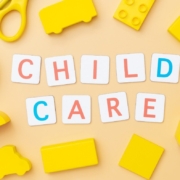TAX FACTS ABOUT SUMMERTIME CHILD CARE EXPENSES
Many parents who work or are looking for work must arrange for care of their children during the school vacation. If you are one of those, and your children requiring care are under 13 years of age, you may qualify for a child care tax credit.
The credit ranges from 20% to 35% (the IRS provides a table) of non-reimbursed expenses based upon your income, with the higher percentages applying to lower income taxpayers and the lower percentages applying to higher income taxpayers. As an example, if your income (AGI) is below $15,000, the credit percentage is 35% and gradually reduces as your income increases, until it caps out at 20% for incomes above $43,000. The maximum expense amount allowed is $3,000 for one child and $6,000 for two or more. The credit is non-refundable, which means it can only reduce your tax to zero and the excess is lost.
The Child and Dependent Care Credit is available for expenses incurred during the lazy hazy days of summer and throughout the rest of the year. You must claim the qualifying child for whom you pay care expenses as your dependent to qualify to claim the credit (but there’s an exception for divorced or separated parents). Here are some additional details:
- Day Camps – The costs of day camp generally count as expenses towards the child and dependent care credit. A day camp or similar program may qualify, even though the camp specializes in a particular activity, such as soccer or computers.
- Overnight Camp or Tutoring – No portion of the cost of an overnight camp or a tutoring program is a qualified expense.
- School Expenses – Only school expenses for a child below the level of kindergarten will qualify for the credit.
- Day Care Facility – The expenses paid the day care center qualify. If the day care center cares for more than six persons, it must comply with applicable state and local laws.
- In Home Care – If your childcare provider is a “sitter” at your home, the sitter is considered your employee, and you may need to pay payroll taxes and file payroll returns.
- Maximum Qualifying Expenses – You may use up to $3,000 of the unreimbursed expenses paid in a year for one qualifying individual or $6,000 for two or more qualifying individuals to figure the credit. This will provide a tax credit of between $600 and $1,050 for one child and $1,200 and $2,100 for two or more depending upon your income. If the expenses exceed your work earnings, use the earnings to figure the credit. Dependent care benefits received through your employer will also affect the computation of the credit, and could result in no credit being allowed.
- Records Required – To claim the credit on your tax return, you will need to provide the care provider’s name, address and tax ID number. No credit is allowed without that information. Where you have more than one child you must also show the expenses paid for each child, up to the $3,000 maximum per child. If your state allows a child care credit, additional information, such as the care provider’s phone number, may be required.
For more information about how this credit will affect your particular circumstances, or for information about claiming this credit for your spouse or a dependent age 13 or over who is not able to care for himself or herself, please call this office.








Leave a Reply
Want to join the discussion?Feel free to contribute!